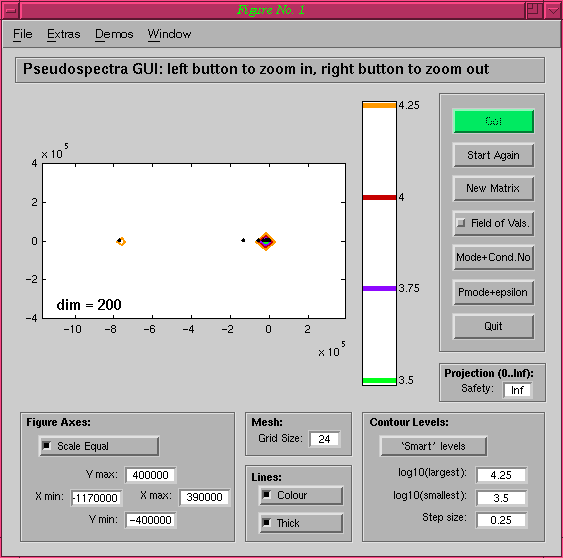Projection Tutorial
(An older, functionally equivalent version is also available as a gzipped
postscript file (106kB) or a zipped pdf
file (116kB).)
This tutorial is designed to take you through an example where the
the time needed to create a high-resolution publication quality plot
of the pseudospectra of a matrix is significantly reduced by
projection onto a carefully chosen invariant subspace.
You must have the Pseudospectra GUI installed on your machine to be
able to work through this tutorial. You can download
it by clicking here.
The tutorial is organised into five parts:
- Step 1: Set up the data
- Step 2: Select the portion of the complex plane of interest
- Step 3: Begin to introduce projection
- Step 4: Reduce the Safety value still further
- Step 5: Compute the pseudospectra on a fine grid of size 200 by 200
You can download the code used to generate the matrices used in
this tutorial by clicking here. This
is taken from Trefethen's paper, Computation of Pseudospectra (Acta
Numerica, 1999), which describes projection in greater detail.
Step 1: Set up the data.
Generate the matrix B by downloading the code and running it with N=200:
B = lnt_comp_psa_mtxs(200);
Compute the pseudospectra using the default settings:
psa(B)
You should end up with something like the following image, which
takes about 30 seconds to generate on my Sun Ultra 5 workstation.
Note the large magnitudes of the x and y axes. Thes axes are chosen
automatically by the Pseudospectra GUI, and are this big because of
the outlying eigenvalue near -80,000.

Pseudospectra GUI home page.
|



